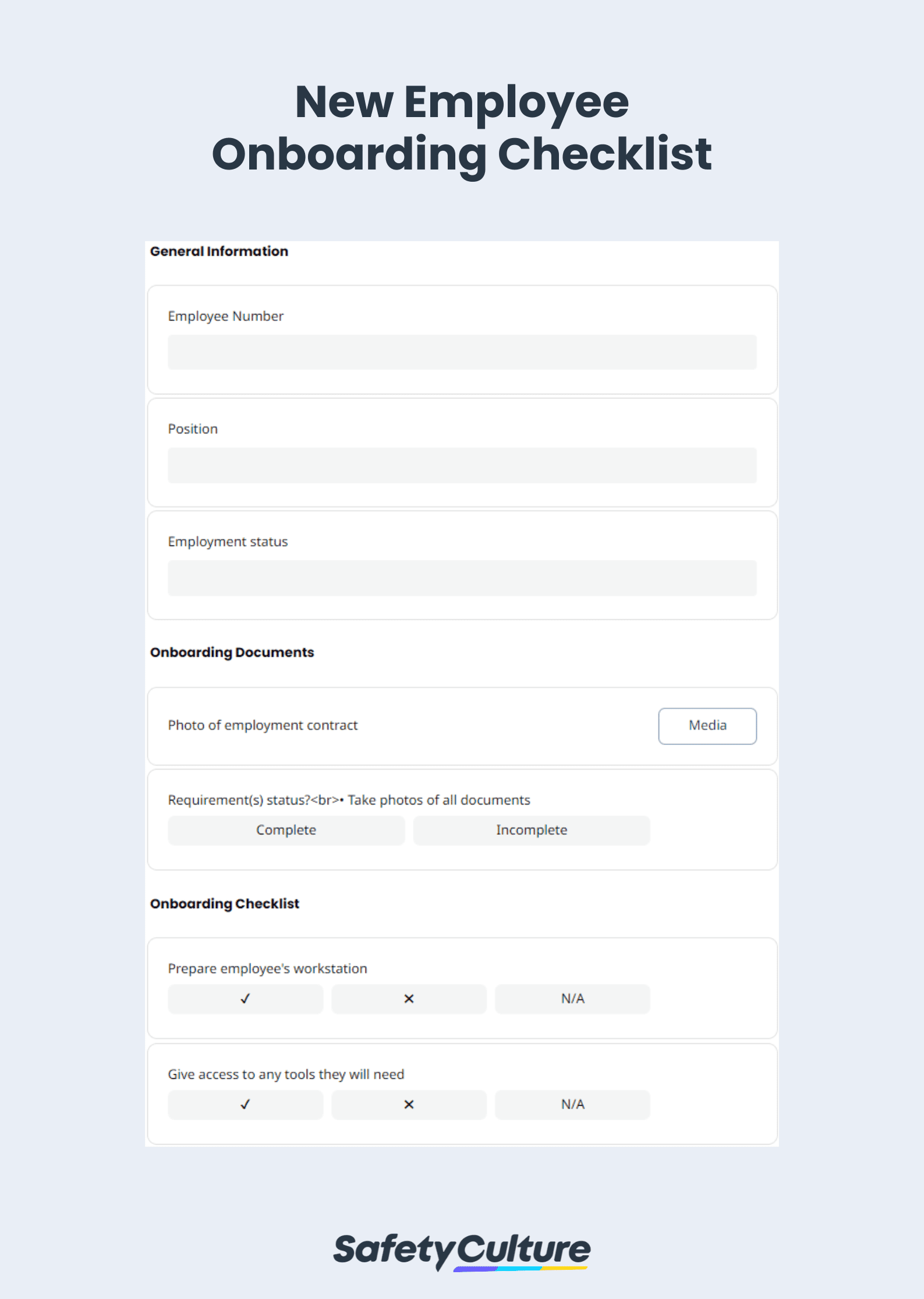What is an Employee Onboarding Checklist?
An employee onboarding checklist is a tool typically used to verify the collection of required documents from the new employee and confirm the complete administration of onboarding processes. This checklist aims to help streamline the various activities involved in ensuring the new hire receives a smooth transition process before commencing work.
What is an Employee Onboarding Process?
An employee onboarding process refers to a protocol designed by a company’s Human Resources (HR) and training department in order to prepare new hires for work. It aims to acclimate new hires to the company’s culture, orient them about its history and mission, set job expectations for their respective roles, and provide basic training.
The employee onboarding process commonly consists of 5 phases:
- Pre-boarding – This is where a welcome letter is sent to the new hire. Even before the start of the onboarding process, the company can inform the rest of the staff about the new employee coming in, set up user accounts, grant access to tools and resources, prepare the workstation, and organize the new starter kit.
- Orientation – Usually taking place on the first day or first week, the orientation aims to serve two purposes. One is to help orient the new employee about the company culture, best practices, and values. Another is for the new employee to adjust to the work environment and feel welcome.
- Role-specific training – This is the phase where the new hire gets onboarded regarding the company’s systems, tools, and objectives that are specific or relevant to their role.
- Relationship building – A positive connection between the new hire and the manager must also be created during the onboarding process. In this stage, building a solid foundation about their working styles is important.
- Transition and goal setting – To help the new employee transition to a full-time one, this last stage is where setting goals is ideal. This is also where the schedule of performance reviews can be identified.
Why Use This Checklist
Employee onboarding checklists help HR teams, hiring managers, and employees in ensuring a smooth onboarding process. This type of checklist is an effective tool to help improve the connection of the new employee to the organization. It serves as a resource to check whether each relevant aspect of the company is well-discussed with the employee.
This way, consistency and time efficiency in the onboarding process can be maintained across the organization since standardized checklists can be used for every new hire coming in.
What Does a New Hire Onboarding Plan Include?
An effective new hire onboarding plan must ensure that new hires have everything they need to perform their daily tasks. A typical new hire onboarding plan generally covers the following areas:
- Preparation of the new employee’s workstation, company email, user accounts, office supplies, and work equipment
- Collection of new hire employment records such as letters of contracts and tax certificates
- Orientation of the company’s history, culture, values, and mission
- Introduction to teammates, supervisor, and manager
- General and role-specific training
How to Create and Use an Employee Onboarding Checklist
Follow these steps to guide you as you create and fill out an employee onboarding form:
- Dedicate a Title Page for the basic job details. These include the new employee’s department, name, and start date. Also, indicate the HR representative in charge of onboarding the new hire.
- With the General Information section on the second page, put the employee number, position, and employment status.
- Allot the next section for the Onboarding Documents. Attach a photo of the employment contract as well as indicate the status of other important requirements.
- Include a section for the Onboarding Proper. This is where the employee’s workstation and access to tools and resources are prepared. Also, check if the benefits package, role, goals, projects, job description, and responsibilities are discussed.
- For the last page of the checklist, state any additional training needs. Make sure to collect signatures from the employee and HR representative before completing the report.
FAQs About Employee Onboarding Checklists
The 5 C’s of onboarding are the following:
- Compliance – employer’s priorities, how the employee should view their job in the company, and other legal matters
- Clarification – setting and communicating job expectations
- Culture – employer’s programs, initiatives (i.e., promoting diversity and inclusion in the workplace), and safety policies
- Connections – assessment of how the employee feels connected in the workplace
- Check back – schedule of feedback meetings after 30, 60, and 90 days the employee was hired
Depending on the needs of a business or organization, checklists can be complex or simple. If a company or its HR department decides to create a comprehensive one, it can consist of 5 separate pages for each phase of the onboarding stage. On the other hand, it can also consist of 1 to 2 pages specifically covering the orientation and role-specific training only.
While there are no legal considerations when creating a hiring and onboarding checklist, this tool helps organizations, HR personnel, and hiring managers to ensure that legal matters are discussed, safety training programs are completed, and other needed processes are followed.




